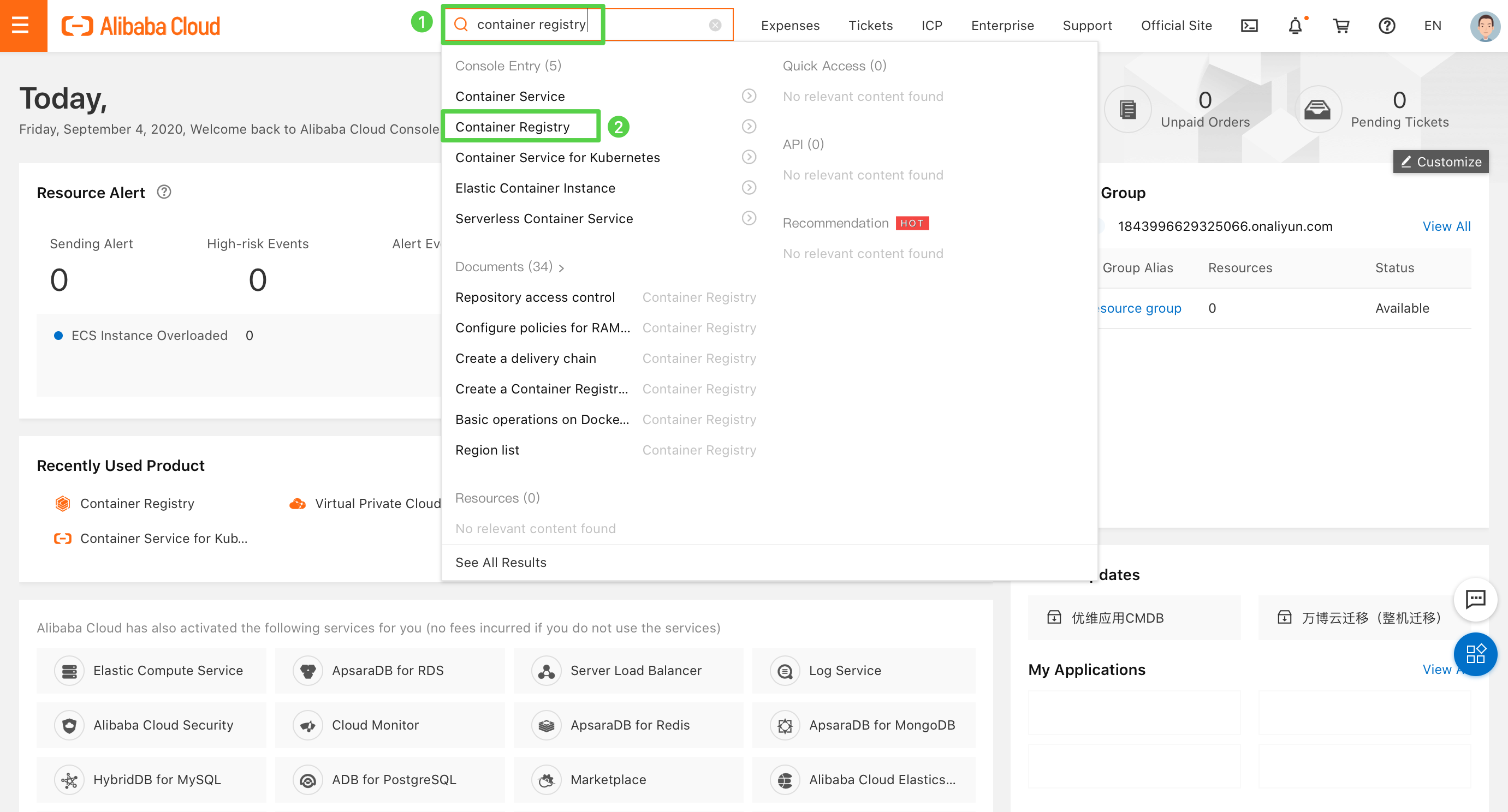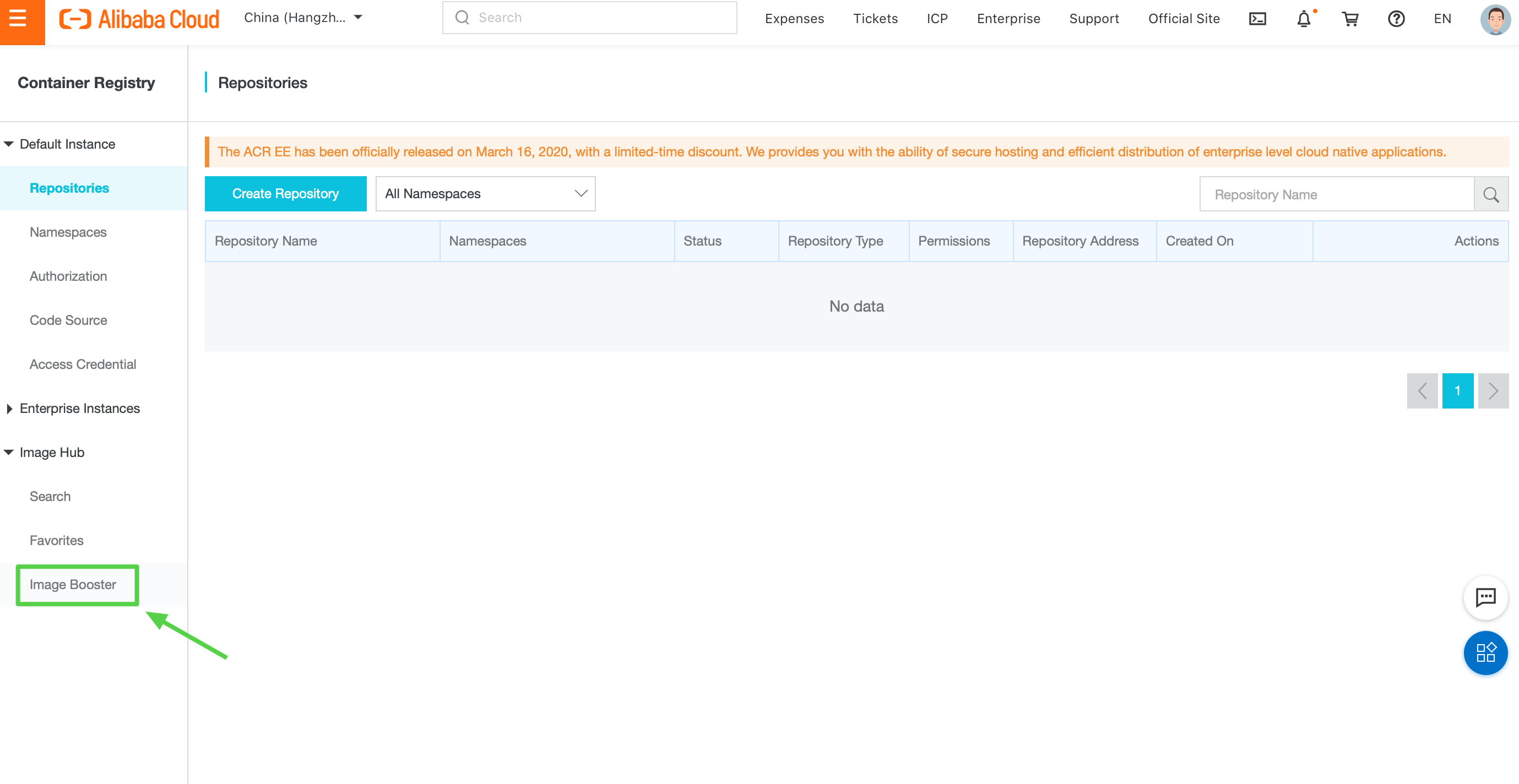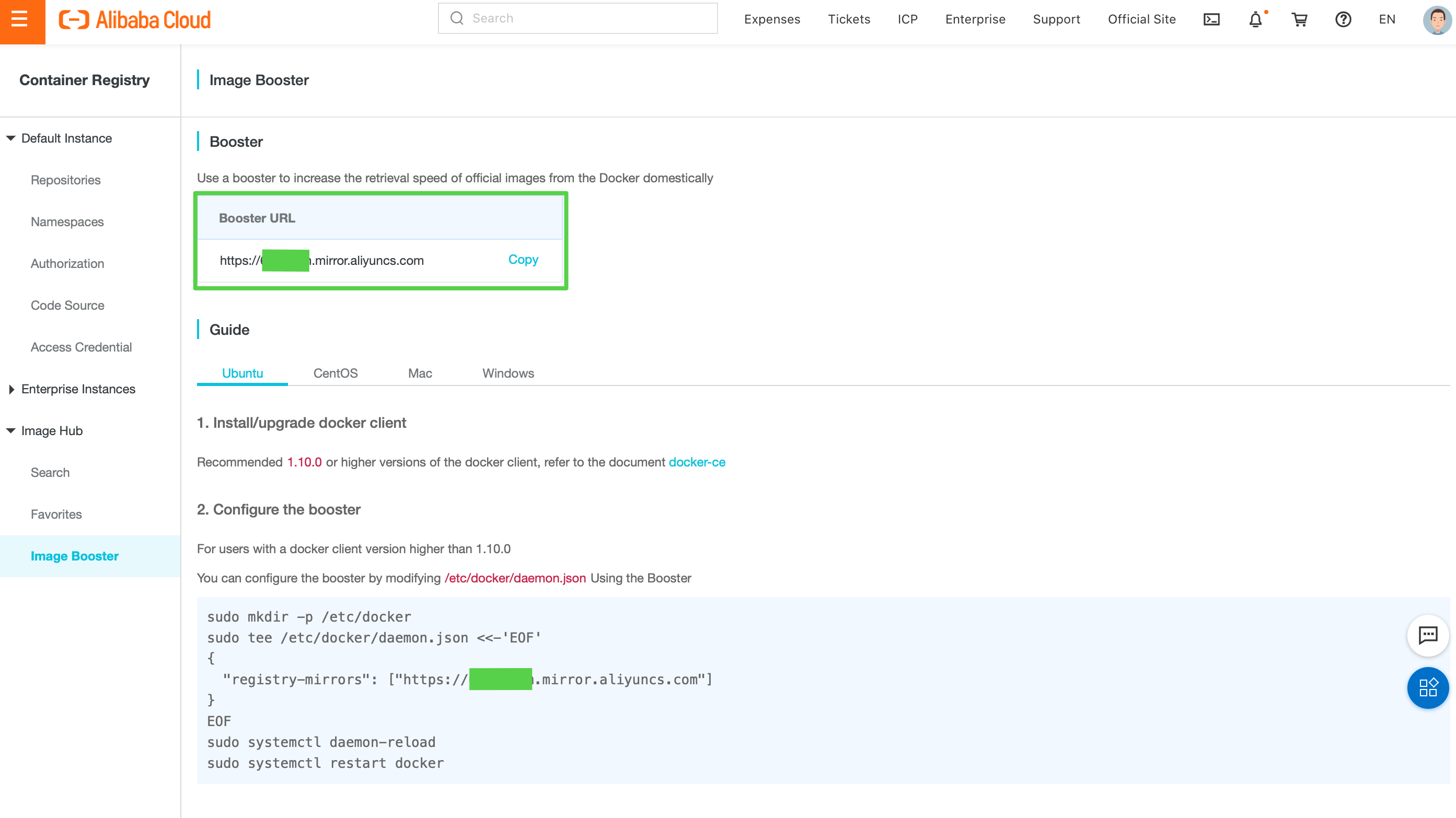
Configure a Booster for Installation
If you have trouble downloading images from dockerhub.io, it is highly recommended that you configure a registry mirror (i.e. booster) beforehand to speed up downloads. You can refer to the official documentation of Docker or follow the steps below.
Get a Booster URL
To configure the booster, you need a registry mirror address. See the following example to see how you can get a booster URL from Alibaba Cloud.
-
Log in to the console of Alibaba Cloud and enter “container registry” in the search bar. Click Container Registry in the drop-down list as below.

-
Click Image Booster.

-
You can find the Booster URL in the image below as well as the official guide from Alibaba Cloud to help you configure the booster.

Set the Registry Mirror
You can configure the Docker daemon directly or use KubeKey to set the configuration.
Configure the Docker daemon
Note
-
Run the following commands:
sudo mkdir -p /etc/dockersudo vi /etc/docker/daemon.json -
Add the
registry-mirrorskey and value to the file.{ "registry-mirrors": ["https://<my-docker-mirror-host>"] }Note
Make sure you replace the address within the quotation mark above with your own Booster URL. -
Save the file and reload Docker by executing the following commands so that the change can take effect.
sudo systemctl daemon-reloadsudo systemctl restart docker
Use KubeKey to set the registry mirror
-
After you create a
config-sample.yamlfile with KubeKey before installation, navigate toregistryin the file.registry: registryMirrors: [] insecureRegistries: [] privateRegistry: ""Note
For more information about each parameter under theregistrysection, see Kubernetes Cluster Configurations. -
Provide the registry mirror address as the value of
registryMirrorsand save the file. For more information about installation, see Multi-node Installation.
Note
config-sample.yaml file is not needed for this mode.Feedback
Was this page Helpful?













 Previous
Previous
